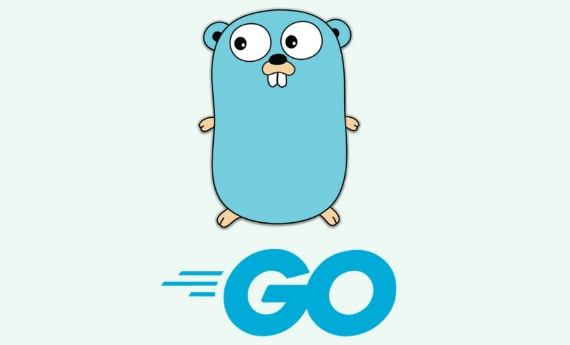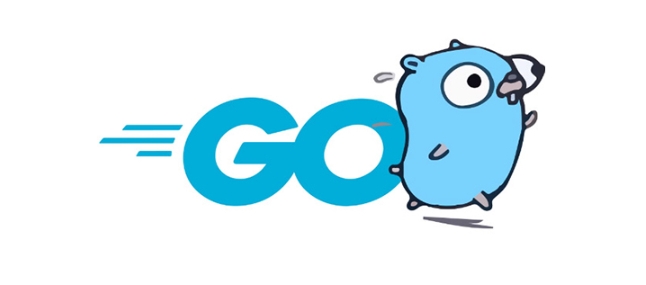Building a Kubernetes controller using Go is the standard way to scale cluster behavior, because Go has a high performance, powerful ecosystem and mature toolchain. 1. Install Kubebuilder and initialize the project; 2. Create custom resource (CRD) definitions such as MyApp; 3. Implement Reconcile logic to ensure the expected state (such as creating or updating a Deployment); 4. Use the make command to run or deploy the controller; 5. Follow best practices, including idempotence, error retry, RBAC permission configuration, and extend the use of Finalizers, Status subresources, and Webhooks. Through controller-runtime and Kubebuilder, Go makes building reliable, maintainable controllers efficient and easy to manage, ultimately achieving automated operation and maintenance goals.

Building custom Kubernetes controllers with Go is a powerful way to extend the behavior of your cluster and automatic complex operational logic. Since Kubernetes itself is written in Go, the ecosystem around Go is mature, with robust libraries like client-go , controller-runtime , and tools like Kubebuilder and kustomize that make building controllers efficient and maintainable.

Here's how you can get started and what you need to know.
Why Use Go for Kubernetes Controllers?
Go is the de facto language for Kubernetes development. The main reasons include:

- Performance : Go compiles to a single binary, has low memory overhead, and excellent concurrency support via goroutines.
- Strong Ecosystem :
client-goprovides deep integration with the Kubernetes API;controller-runtime(part of Kubernetes SIGs) simplifies common controller patterns. - Tooling : Tools like Kubebuilder , Operator SDK , and kubebuilder init streamline scaffolding, testing, and deployment.
If you're extending Kubernetes in production, Go is the most practical choice.
Key Components of a Custom Controller
A Kubernetes controller watches resources and take actions to move the system from its current state to the desired state. At a high level, it includes:

- Informers/Watchers : Listen to changes on specific resources (eg, Pods, Custom Resources).
- Client : Interact with the Kubernetes API to read, create, update, or delete objects.
- Reconciliation Loop : The core logic that runs whenever a change is detected.
- Custom Resource Definition (CRD) : If you're building an operator, you'll likely define a CRD to represent your custom object.
Step-by-Step: Building a Controller with controller-runtime
The easiest way to build a controller today is using Kubebuilder and controller-runtime .
1. Install Kubebuilder
# On Linux/macOS curl -L -o kubebuilder https://go.kubebuilder.io/dl/latest/$(go env GOOS)/$(go env GOARCH) chmod x kubebuilder && sudo mv kubebuilder /usr/local/bin/
2. Initialize a Project
mkdir my-controller && cd my-controller kubebuilder init --domain example.com --repo example.com/mymodule
This sets up a Go module with basic scaffolding and Docker support.
3. Create a Custom Resource (API)
kubebuilder create api --group apps --version v1 --kind MyApp
This generates:
- A Go struct for
MyApp - A CRD manifest (
config/crd/bases/) - A controller scaffold
You can now customize the MyAppSpec and MyAppStatus structs in api/v1/myapp_types.go .
4. Implement the Reconcile Logic
Edit controllers/myapp_controller.go :
func (r *MyAppReconciler) Reconcile(ctx context.Context, req ctrl.Request) (ctrl.Result, error) {
log := r.Log.WithValues("myapp", req.NamespacedName)
// Fetch the MyApp instance
var myapp MyApp
if err := r.Get(ctx, req.NamespacedName, &myapp); err != nil {
return ctrl.Result{}, client.IgnoreNotFound(err)
}
// Your logic here: eg, ensure a Deployment exists
desiredDeployment := newDeploymentForMyApp(&myapp)
var found appsv1.Deployment
err := r.Get(ctx, types.NamespacedName{Name: desiredDeployment.Name, Namespace: desiredDeployment.Namespace}, &found)
if err != nil && errors.IsNotFound(err) {
log.Info("Creating Deployment", "name", desiredDeployment.Name)
return ctrl.Result{}, r.Create(ctx, desiredDeployment)
} else if err != nil {
return ctrl.Result{}, err
}
// If found, maybe update or do nothing
if !reflect.DeepEqual(found.Spec, desiredDeployment.Spec) {
found.Spec = desiredDeployment.Spec
log.Info("Updating Deployment")
return ctrl.Result{}, r.Update(ctx, &found)
}
return ctrl.Result{}, nil
}5. Run the Controller
During development:
Make run
Or deploy to cluster:
make docker-build docker-push IMG=myregistry/my-controller:v1 make deploy IMG=myregistry/my-controller:v1
Your CRD and controller will be installed in the cluster.
Best Practices
- Use controller-runtime : It handles informer setup, retry logic, leader election, and more.
- Idempotency : Reconcile functions must be idealpotent — safe to run multiple times.
- Error Handling : Return errors to retry, use
ctrl.Result{RequeueAfter: ...}for delayed requests. - Logging & Metrics : Use structured logging (
logr) and expose Prometheus metrics (built-in support). - RBAC : Define proper permissions in
config/rbac/role.yaml.
Advanced Patterns
- Finalizers : For cleanup before object deletion (eg, deleting cloud resources).
- Status Subresource : Update only
.statuswithout affecting.spec. - Webhooks : Add validation or defaulting using
admission.Webhook. - Multi-Version CRDs : Support version upgrades with conversion webhooks.
Alternatives and Tools
- Operator SDK : Built on Kubebuilder, adds higher-level abstractions and Ansible/Helm support.
- KubeBuilder Docs : Excellent guides at book.kubebuilder.io
- Sample Controllers : Check the kubebuilder example for a full walkthrough.
Building controllers in Go gives you full control and performance, and with modern tools, it's more approachable than ever. Whether you're automated deployments, managing databases, or integrating external systems, a custom controller lets Kubernetes work for you.
Basically, define your CRD, write a reconcile loop, and let the control plane do the rest.
The above is the detailed content of Using Go to build custom Kubernetes controllers. For more information, please follow other related articles on the PHP Chinese website!

Hot AI Tools

Undress AI Tool
Undress images for free

Undresser.AI Undress
AI-powered app for creating realistic nude photos

AI Clothes Remover
Online AI tool for removing clothes from photos.

Clothoff.io
AI clothes remover

Video Face Swap
Swap faces in any video effortlessly with our completely free AI face swap tool!

Hot Article

Hot Tools

Notepad++7.3.1
Easy-to-use and free code editor

SublimeText3 Chinese version
Chinese version, very easy to use

Zend Studio 13.0.1
Powerful PHP integrated development environment

Dreamweaver CS6
Visual web development tools

SublimeText3 Mac version
God-level code editing software (SublimeText3)

Hot Topics
 Understanding the Performance Differences Between Golang and Python for Web APIs
Jul 03, 2025 am 02:40 AM
Understanding the Performance Differences Between Golang and Python for Web APIs
Jul 03, 2025 am 02:40 AM
Golangofferssuperiorperformance,nativeconcurrencyviagoroutines,andefficientresourceusage,makingitidealforhigh-traffic,low-latencyAPIs;2.Python,whileslowerduetointerpretationandtheGIL,provideseasierdevelopment,arichecosystem,andisbettersuitedforI/O-bo
 Is golang frontend or backend
Jul 08, 2025 am 01:44 AM
Is golang frontend or backend
Jul 08, 2025 am 01:44 AM
Golang is mainly used for back-end development, but it can also play an indirect role in the front-end field. Its design goals focus on high-performance, concurrent processing and system-level programming, and are suitable for building back-end applications such as API servers, microservices, distributed systems, database operations and CLI tools. Although Golang is not the mainstream language for web front-end, it can be compiled into JavaScript through GopherJS, run on WebAssembly through TinyGo, or generate HTML pages with a template engine to participate in front-end development. However, modern front-end development still needs to rely on JavaScript/TypeScript and its ecosystem. Therefore, Golang is more suitable for the technology stack selection with high-performance backend as the core.
 How to build a GraphQL API in golang
Jul 08, 2025 am 01:03 AM
How to build a GraphQL API in golang
Jul 08, 2025 am 01:03 AM
To build a GraphQLAPI in Go, it is recommended to use the gqlgen library to improve development efficiency. 1. First select the appropriate library, such as gqlgen, which supports automatic code generation based on schema; 2. Then define GraphQLschema, describe the API structure and query portal, such as defining Post types and query methods; 3. Then initialize the project and generate basic code to implement business logic in resolver; 4. Finally, connect GraphQLhandler to HTTPserver and test the API through the built-in Playground. Notes include field naming specifications, error handling, performance optimization and security settings to ensure project maintenance
 How to install Go
Jul 09, 2025 am 02:37 AM
How to install Go
Jul 09, 2025 am 02:37 AM
The key to installing Go is to select the correct version, configure environment variables, and verify the installation. 1. Go to the official website to download the installation package of the corresponding system. Windows uses .msi files, macOS uses .pkg files, Linux uses .tar.gz files and unzip them to /usr/local directory; 2. Configure environment variables, edit ~/.bashrc or ~/.zshrc in Linux/macOS to add PATH and GOPATH, and Windows set PATH to Go in the system properties; 3. Use the government command to verify the installation, and run the test program hello.go to confirm that the compilation and execution are normal. PATH settings and loops throughout the process
 Resource Consumption (CPU/Memory) Benchmarks for Typical Golang vs Python Web Services
Jul 03, 2025 am 02:38 AM
Resource Consumption (CPU/Memory) Benchmarks for Typical Golang vs Python Web Services
Jul 03, 2025 am 02:38 AM
Golang usually consumes less CPU and memory than Python when building web services. 1. Golang's goroutine model is efficient in scheduling, has strong concurrent request processing capabilities, and has lower CPU usage; 2. Go is compiled into native code, does not rely on virtual machines during runtime, and has smaller memory usage; 3. Python has greater CPU and memory overhead in concurrent scenarios due to GIL and interpretation execution mechanism; 4. Although Python has high development efficiency and rich ecosystem, it consumes a high resource, which is suitable for scenarios with low concurrency requirements.
 Go sync.WaitGroup example
Jul 09, 2025 am 01:48 AM
Go sync.WaitGroup example
Jul 09, 2025 am 01:48 AM
sync.WaitGroup is used to wait for a group of goroutines to complete the task. Its core is to work together through three methods: Add, Done, and Wait. 1.Add(n) Set the number of goroutines to wait; 2.Done() is called at the end of each goroutine, and the count is reduced by one; 3.Wait() blocks the main coroutine until all tasks are completed. When using it, please note: Add should be called outside the goroutine, avoid duplicate Wait, and be sure to ensure that Don is called. It is recommended to use it with defer. It is common in concurrent crawling of web pages, batch data processing and other scenarios, and can effectively control the concurrency process.
 Go embed package tutorial
Jul 09, 2025 am 02:46 AM
Go embed package tutorial
Jul 09, 2025 am 02:46 AM
Using Go's embed package can easily embed static resources into binary, suitable for web services to package HTML, CSS, pictures and other files. 1. Declare the embedded resource to add //go:embed comment before the variable, such as embedding a single file hello.txt; 2. It can be embedded in the entire directory such as static/*, and realize multi-file packaging through embed.FS; 3. It is recommended to switch the disk loading mode through buildtag or environment variables to improve efficiency; 4. Pay attention to path accuracy, file size limitations and read-only characteristics of embedded resources. Rational use of embed can simplify deployment and optimize project structure.
 Evaluating Code Readability and Maintainability: Golang vs Python Perspectives
Jul 03, 2025 am 02:40 AM
Evaluating Code Readability and Maintainability: Golang vs Python Perspectives
Jul 03, 2025 am 02:40 AM
WhenchoosingbetweenGolangandPythonforcodereadabilityandmaintainability,thedecisionhingesonteampriorities.1.Golangoffersstrictconsistencywithminimal,opinionatedsyntaxandbuilt-intoolinglikegofmt,ensuringuniformcodestyleandearlyerrordetection.2.Pythonpr






